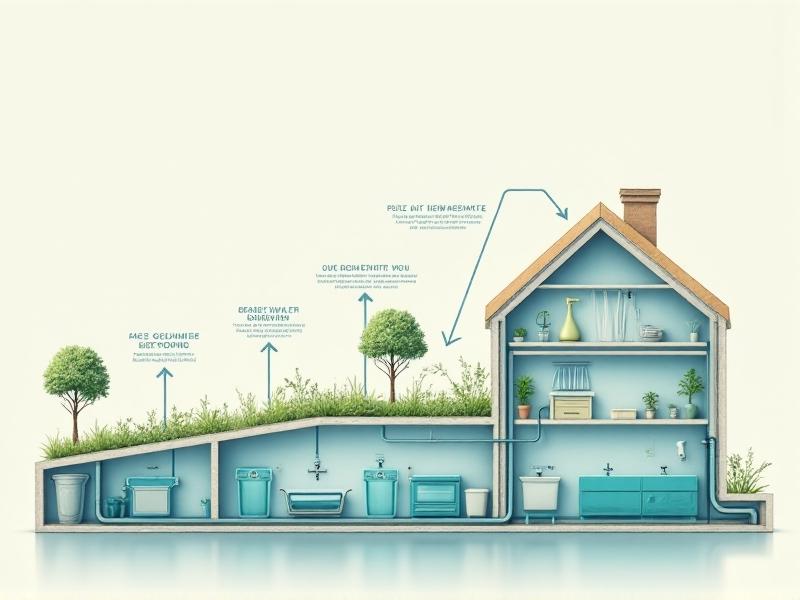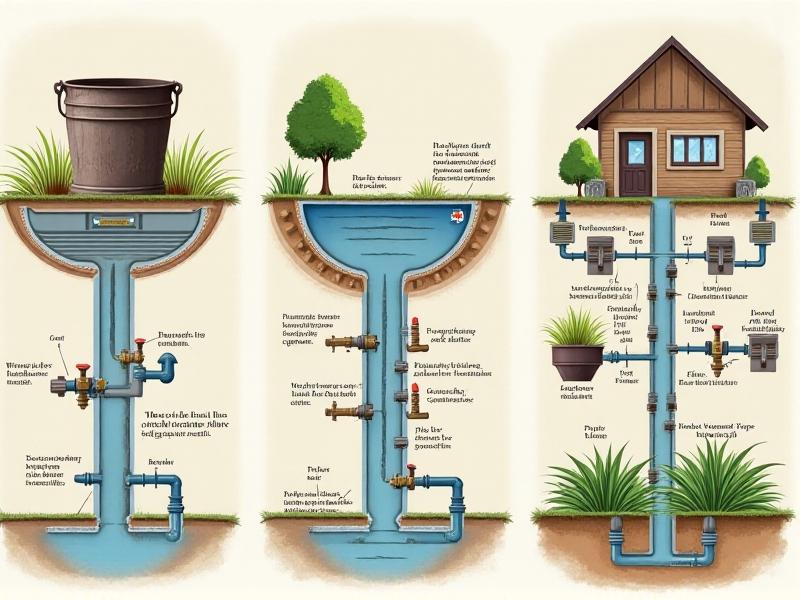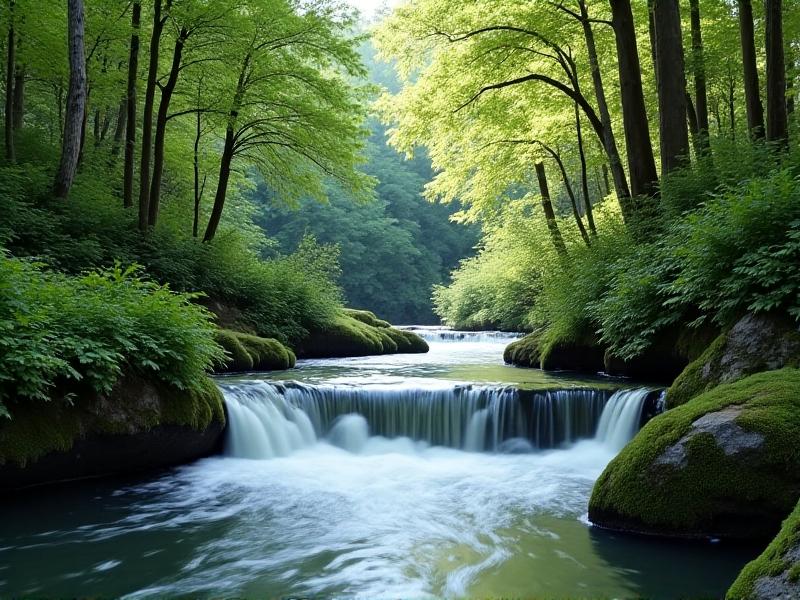Greywater Garden Irrigation Plans
What is Greywater? Understanding the Basics

Greywater refers to gently used water from household activities such as showering, handwashing, laundry, and dishwashing. Unlike blackwater, which contains sewage from toilets, greywater is free of fecal matter but may contain traces of dirt, soap, or food particles. This distinction makes it suitable for repurposing in garden irrigation, provided it’s managed correctly. The concept of recycling greywater isn’t new—ancient civilizations channeled household wastewater to nourish crops—but modern systems refine this practice with efficiency and safety in mind.
Typical sources of greywater include bathroom sinks, showers, bathtubs, and washing machines. Kitchen sink water is often excluded due to higher grease and food content, which can clog irrigation systems or harm soil health. By diverting these water streams to gardens, households can reduce freshwater consumption by up to 50%, a critical advantage in drought-prone regions. Greywater systems range from basic setups, like manually bucketing water outdoors, to automated filtration systems that distribute water through subsurface drip lines. Regardless of complexity, the core principle remains: reuse water wisely to support both ecosystems and utility bills.
Benefits of Greywater Recycling for Garden Health
Recycling greywater offers a dual benefit: conserving freshwater resources while enhancing garden vitality. Plants thrive on nutrient-rich greywater, which often contains phosphorus and nitrogen from soaps and detergents. These compounds, in moderation, act as natural fertilizers, promoting leaf growth and flower production. Studies show gardens irrigated with greywater often require fewer synthetic fertilizers, reducing chemical runoff and fostering organic gardening practices.
Greywater also maintains soil moisture more consistently than sporadic rainwater or manual watering. This steady supply is especially valuable during dry spells, preventing soil from becoming parched and brittle. Over time, organic matter in greywater can improve soil structure, encouraging earthworm activity and microbial diversity. However, successful greywater use depends on soap selection—opt for biodegradable, low-sodium products to avoid salt buildup, which can harm plant roots and soil pH. When managed thoughtfully, greywater transforms from waste to resource, creating a resilient, self-sustaining garden ecosystem.
Types of Greywater Irrigation Systems

Greywater systems vary in complexity to suit different budgets and garden sizes. The simplest method is a manual bucketing system , where water is collected in containers from showers or sinks and carried directly to plants. This no-cost approach works for small gardens but demands daily effort. For semi-automated solutions, laundry-to-landscape systems redirect washing machine discharge through a hose or pipe to mulch basins around trees or shrubs. These systems require minimal plumbing adjustments and are ideal for beginners.
More advanced setups include branched drain systems , which use gravity to distribute water through PVC pipes to multiple garden zones. Filters remove larger particles, ensuring water flows smoothly. For maximum precision, subsurface drip irrigation systems pump filtered greywater through buried drip lines, delivering moisture directly to plant roots while minimizing evaporation and human contact. While costly, these systems excel in water efficiency and are suited for vegetable gardens or water-sensitive plants. Choosing the right system hinges on factors like garden size, local climate, and willingness to maintain equipment.
Designing an Effective Greywater System

Designing a greywater system begins with mapping household water output and garden needs. Calculate the average greywater volume generated daily—for instance, a shower uses ~15 gallons per minute, while a washing machine uses 15–40 gallons per load. Pair this data with your garden’s water requirements, factoring in plant types, soil drainage, and sun exposure. Sandy soils, for example, absorb water quickly but may need more frequent irrigation compared to clay soils.
Next, decide on distribution methods. Mulch basins—shallow pits filled with wood chips or straw—are popular for trees and shrubs, as they slow water release and filter contaminants. For flower beds, consider drip lines with emitters spaced to match plant density. Avoid pooling water by grading the landscape so greywater flows evenly. Include a diversion valve to switch between greywater and sewer systems during heavy rains or system maintenance. DIY enthusiasts can repurpose materials like recycled barrels for storage, but always use UV-resistant pipes to prevent degradation. A well-designed system harmonizes household routines with ecological balance.
Navigating Legal and Health Considerations

Greywater regulations vary widely by region, so consult local building codes before installing a system. California, Arizona, and Texas, for example, have progressive policies allowing most residential systems without permits, provided they follow guidelines like using biodegradable soap or avoiding surface runoff. In contrast, states like Florida require permits for any greywater use due to high groundwater contamination risks.
Health precautions are equally critical. Greywater should never contact edible plant parts—root vegetables like carrots are particularly vulnerable to bacterial contamination. Use subsurface irrigation for veggies and restrict spray systems to ornamental plants. To prevent odors or pests, ensure greywater is used within 24 hours and avoid overloading the soil. Regularly inspect for leaks, and wear gloves during maintenance. By adhering to these practices, greywater remains a safe, legal supplement to traditional irrigation.
Best Plants for Greywater Irrigation
Not all plants tolerate greywater equally. Species native to arid climates, like lavender, rosemary, and succulents, excel because they’re adapted to low-water, high-mineral conditions. Fruit trees—including citrus, fig, and olive—also thrive, as their deep roots absorb nutrients while resisting salt buildup. Avoid acid-loving plants like azaleas or blueberries, as greywater’s alkaline pH can stunt their growth.
For vegetable gardens, focus on crops with edible fruits rather than leaves or roots. Tomatoes, eggplants, and peppers are solid choices since their produce isn’t in direct contact with soil. Always apply greywater at the base of plants and rotate with fresh water periodically to flush out salts. Pairing greywater with drought-resistant groundcovers like clover or thyme creates a self-mulching landscape that maximizes every drop.
Maintaining Your Greywater System Over Time
Regular maintenance ensures greywater systems operate efficiently for years. Clean filters monthly—depending on type—by rinsing mesh screens or replacing coconut husk filters. Inspect pipes quarterly for clogs or leaks, especially near joints. In colder climates, winterize systems by draining water to prevent freeze damage. If using a pump, check its motor annually and keep it free of debris.
Monitor soil health by testing pH and salinity yearly. If salts accumulate, leach the soil with rainwater or install a flush valve. Replace mulch in basins every 6–12 months to maintain filtration and aeration. Lastly, stay informed about eco-friendly detergents, as formula changes can affect water quality. A proactive approach turns potential challenges into routine checkups, keeping your garden green and your conscience cleaner.







